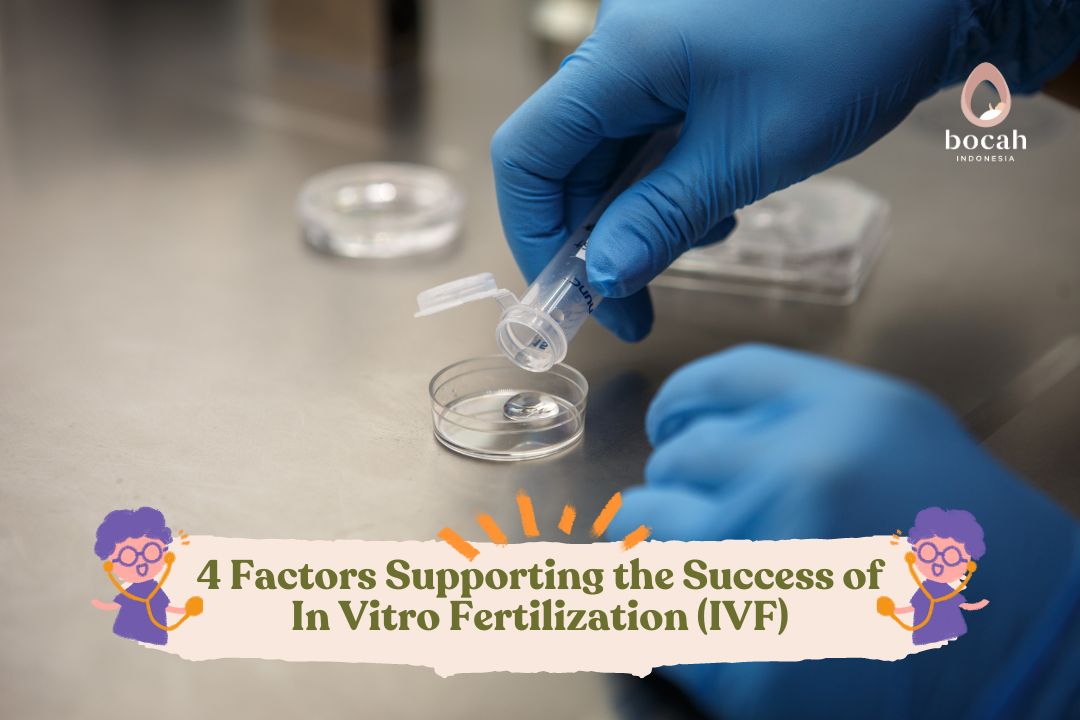How to Determine Baby’s Gender, Factors Determining Baby’s Gender

When and how can the baby’s gender be determined? Let’s explore the various options below.
Since the positive result on the pregnancy test is known, expectant mothers often start wondering whether they will have a baby girl or boy. From there, various myths begin to emerge. Some say that the baby’s gender can be determined by the shape of the belly, the intensity of pregnancy symptoms, changes in the mother’s skin color, the fetus’s heart rate, and so on. Although sometimes true, these things do not have a scientific basis. In fact, the intuition of expectant mothers about their baby’s gender is often wrong. So, what is the best way to find out the baby’s gender? And can the baby’s gender be programmed before pregnancy?
Factors determining the baby’s gender
It is important to know that the baby’s gender is determined by the chromosomes or genetic material from the father. The mother’s egg will always carry an X chromosome (female). In contrast, the father’s sperm can carry either an X or Y chromosome (male). If the sperm that fertilizes the egg carries a Y chromosome, the resulting baby will have a combination of XY chromosomes, which means a male. If the sperm that fertilizes the egg carries an X chromosome, the baby will have XX chromosomes, which means a female.
How to Determine the Baby’s Gender
When can the baby’s gender be determined? In the past, expectant mothers had to wait until delivery to find out the baby’s gender. Nowadays, the baby’s gender can be assessed through mid-pregnancy ultrasound examinations (USG). Recently, the baby’s gender can even be determined as early as 10 weeks into the pregnancy.
To understand it better, here is a list of ways to determine the baby’s gender:
Tanya Mincah tentang Promil?
- Using Gender Predictor Tests Gender predictor tests, such as the Chinese Gender Calendar Predictor, are mostly for fun. Their accuracy is around 50%, similar to guesswork. There are also self-tests that examine urine or blood to predict the baby’s gender. However, there is no scientific evidence to support their accuracy and usefulness.
- Ultrasound Examination Ultrasound examinations seem to be the most popular, easy, and affordable way to determine the baby’s gender. The baby’s gender can be known through an ultrasound examination at around 18-22 weeks of pregnancy. Although the baby’s penis or vulva begins to form at 6 weeks of pregnancy, male and female babies still look similar in ultrasound examinations until around 14 weeks of pregnancy. At this time, both genders are still difficult to differentiate. During the ultrasound, a doctor or trained operator will look for the “hamburger sign” indicating the female genitalia. On the other hand, for male babies, the penis will be clearly visible.
- Non-Invasive Prenatal Testing (NIPT) This is a relatively new and non-invasive way to determine the baby’s gender and certain genetic abnormalities. This test looks for DNA fragments from the male sex chromosomes in the mother’s blood, which can be used to determine whether she is carrying a baby boy or girl. This blood test can also detect Down syndrome and some other genetic abnormalities from as early as 10 weeks of pregnancy. In theory, this test is highly accurate. However, there are factors that affect its accuracy, such as the timing of the test (the earlier the test is done, the less accurate it may be), the quality of the blood sample, and the detection of possible genetic abnormalities that were not diagnosed in the mother.
- Chorionic Villus Sampling (CVS) This method is also a reliable way to predict the baby’s gender. Its accuracy is close to 100 percent. CVS uses a tissue sample taken from the placenta, especially from prominent parts known as villi. This tissue can be examined to detect chromosomal abnormalities and determine whether the baby’s chromosomes are XX or XY. CVS is generally performed between 10 and 13 weeks of pregnancy. However, because it is invasive and carries a small risk of miscarriage, this test is only done for women at high risk of genetic and/or chromosomal abnormalities.
- Amniocentesis Amniotic fluid contains fetal genetic material. Chromosome analysis in this fluid can be used to detect certain genetic abnormalities and the baby’s gender as well. The procedure, known as amniocentesis, is typically performed between 15 and 20 weeks of pregnancy. In this procedure, a needle is carefully inserted into the uterus through the abdominal wall. Once it reaches the amniotic membrane, ultrasound is used to guide the needle to avoid harming the fetus while taking the fluid. Essentially, this is a genetic test similar to CVS. However, amniocentesis is also rarely done solely to determine the baby’s gender due to its invasiveness and slight risk of causing miscarriage. Therefore, it is only used for women at risk of genetic and/or chromosomal abnormalities.
Can the Baby’s Gender Be Determined Before Pregnancy?
Naturally, the chances of conceiving a baby boy or girl are 50-50. However, you might wonder if there are factors that can increase the chances of having a baby with a specific gender. In theory, there is support for this idea, known as the Shettles method.
The Shettles Method
The Shettles method has been known since the 1960s. It was developed by Landrum B. Shettles, a doctor from the United States. His book, titled “How to Choose the Sex of Your Baby,” was highly popular in the market. The book was last updated and revised in 2006.
In developing his method, Shettles studied sperm physiology, the best timing for intercourse, as well as other factors such as intercourse positions and vaginal pH, to determine what influences X or Y sperm in reaching the egg.
1. Characteristics of Sperm
Shettles found differences in the characteristics of X and Y sperm concerning head shape, motility, and resilience in certain environments.
2. Timing of Intercourse
Intercourse should be done at the right time. The woman’s fertile period, known as ovulation, should be clearly known. In women with a 28-day menstrual cycle, ovulation occurs approximately 7-10 days after the end of menstruation, around day 14.
Generally, the fertile period lasts for 6 days, from 2 days before ovulation to 3 days after ovulation. To determine a woman’s fertile period, it is advisable to keep track of the menstrual cycle. Nowadays, there are many digital applications to record menstrual cycles and predict the fertile period. Based on the timing of ovulation and sperm characteristics, Shettles concluded that intercourse early in the fertile period is more likely to result in a baby girl, while intercourse close to and during ovulation is more likely to result in a baby boy.
3. Vaginal pH
Vaginal pH is determined by whether the woman experiences an orgasm during intercourse.
It is inferred that to conceive a baby boy, the woman needs to have an orgasm before the male ejaculation. Conversely, to conceive a baby girl, the woman should delay her orgasm until after the male ejaculation.
4. Intercourse Position
According to Shettles, if the couple wants a baby boy, the best position is one that allows the sperm to be released as close as possible to the cervix, such as in the deep penetration position (doggy style).
On the other hand, if they want a baby girl, the best position is one that allows shallow penetration so that the sperm has to travel further in the acidic vaginal environment, which is more supportive of X sperm. The recommended intercourse positions are face-to-face or missionary (man on top).
Next, is the Shettles method effective?
Shettles claimed that the success rate of his method reached 75 percent. However, a study in 1991 refuted Shettles’ claim. In this study, researchers also considered the timing of intercourse and ovulation markers such as changes in basal body temperature and peak cervical mucus.
The study concluded that fewer male babies were conceived during the peak ovulation period. On the contrary, male babies were more likely to be conceived 3 to 4 days before ovulation and, in some cases, 2 to 3 days after ovulation. In 1995, another study even suggested that intercourse performed 2 to 3 days after ovulation does not always result in pregnancy.
Conflicting findings emerged again in 2001, where a study debunked the idea that X and Y sperm have different shapes, as mentioned by Shettles.
Is there a best way to choose the baby’s gender?
Until now, the Shettles method remains controversial. The only most likely way to choose the baby’s gender is through in vitro fertilization and preimplantation genetic testing (PGT).
PGT is usually performed in high-risk cases to assess the presence of genetic abnormalities in the embryo that will be transferred to the uterus. The main purpose is to ensure that the transferred embryo is healthy and of high quality, reducing the chances of in vitro fertilization failure and miscarriage.
In determining the baby’s gender, PGT is almost 100 percent accurate. And in certain cases, parents are allowed to choose the gender of the embryo to be transferred to the uterus.
Conclusion
So, which method do you choose to determine the baby’s gender? There is no wrong choice. However, the most reliable way to determine the baby’s gender during pregnancy is through an ultrasound examination performed after 14 weeks of gestation or through genetic tests such as amniocentesis, chorionic villus sampling (CVS), or non-invasive prenatal testing (NIPT).
In terms of determining the baby’s gender during conception, it doesn’t hurt to try the Shettles method. But be prepared that the results may not always align with what is desired. If undergoing in vitro fertilization, remember that the purpose is not to choose the baby’s gender, but to help with fertility issues. Sometimes, the baby’s gender can be chosen, but it should be based on various considerations and appropriate indications.
Ask Mincah
[fluentform id=”31″]Source:
- Beta J, Lesmes-Heredia C, Bedetti C, Akolekar R. Risk of miscarriage following amniocentesis and chorionic villus sampling: a systematic review of the literature. Minerva Ginecol. 2018;70(2):215-219. doi:10.23736/S0026-4784.17.04178-8.
- Ghi T, Sotiriadis A, Calda P, et al. ISUOG Practice Guidelines: invasive procedures for prenatal diagnosis. Ultrasound Obstet Gynecol. 2016;48(2):256-268. doi:10.1002/uog.15945.
- Kearin M, Pollard K, Garbett I. Accuracy of sonographic fetal gender determination: predictions made by sonographers during routine obstetric ultrasound scans. Australas J Ultrasound Med. 2014;17(3):125-130. doi:10.1002/j.2205-0140.2014.tb00028.
- Shettles LB. Use of the Y chromosome in prenatal sex determination. Nature. 1971 Mar 5;230(5288):52-3. doi: 10.1038/230052b0. PMID: 4102825.







One Response
Boy are girl